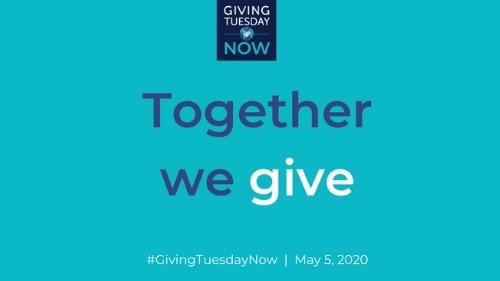Today is #GivingTuesdayNow, a new global day of giving and unity to support communities and nonprofits around the world in response to the need caused by COVID-19. Salesforce is proud to take part in the #GivingTuesdayNow movement to inspire others to join this wave of generosity, engagement, and action.
The outpouring of compassion and support from organizations and individuals eager to help, however they can, has been a bright spot during this pandemic. It’s been amazing to witness business and philanthropy alike give back to their communities in innovative ways.
Beth Kanter, founder of GivingTuesday, recently shared 5 Ways Nonprofits Can Engage on GivingTuesdayNow. Following Beth’s lead, I’m excited to share five ways you can give back. I hope they inspire you to join us in #GivingTuesdayNow.
1. Give your time and talent
Many nonprofits around the world now have to meet growing needs with even fewer resources. Giving your time through virtual skills-based volunteering is a great way to help nonprofits navigate new challenges. At Salesforce, nonprofit and education customers can apply for the Salesforce.org Pro Bono Program to be matched with employee volunteers. For example, Salesforce employee Sebastian Munkelt volunteered his time and talent to help a nonprofit in Germany move data from spreadsheets and paper files into their CRM. Work that used to take three weeks can now be done in a single day!
Want to volunteer your Salesforce expertise for a nonprofit or school? Learn how on Trailhead!
2. Give money, if your means allow
COVID-19 has forced many nonprofits to cancel fundraising events, which serve as a crucial funding stream. As a result, many organizations that have to rapidly scale to meet growing community needs are doing so with limited resources. If your means allow, consider donating to nonprofits or community groups, both to those working directly on the COVID-19 response and others working to continue providing the programs and services their constituents rely on.
Salesforce commits $7.5 million to support local, regional, and global efforts to fight this pandemic. In addition, we provide additional funds to our Future Ready grantee partners to help them survive this crisis and continue their important education, workforce development, and child welfare work.
3. Give gratitude and kindness
In cities across the world, in a beautiful act of unity and gratitude, individuals and families cheer from their windows and rooftops to thank healthcare workers and first responders.
Clap for healthcare workers, and thank your letter carriers, delivery drivers, cashiers, and other essential workers. Write thank you cards, post on social media, and share your appreciation for the people and organizations that are helping your community.
I believe gratitude is the antidote to fear and anxiety. Expressing your thanks can make the recipient feel appreciated and lift your own spirits.
4. Give your voice (online!)
Even when you are physically distancing, your voice can still carry far and wide, and you can use your voice to help others.
For example, you can spread the word about how people can access important resources. Crisis Text Line, an organization that provides free 24/7 crisis support by text, has made it easy to share information about their service. On their website, they have collected draft social media posts, photos, and information you can share directly with friends and family or to your wider social networks. As they note, sharing the information could save somebody’s life.
You can check out the resources on #GivingTuesdayNow to get more ideas for how to raise your voice on social media and rally your networks and community.
5. Give together
Whether you’re expressing gratitude with your family or volunteering virtually with coworkers, giving back can have a greater impact — and can be more fun — when you do it together. In order to inspire community spirit while social distancing, Salesforce employee Alexandra Iyer and her family started a “Quarantainment List,” a robust, crowdsourced list of categorized activities, including virtual volunteering and other ways to give back while social distancing.
Many teams at Salesforce have also found a sense of community by volunteering with their coworkers. For example, five solution engineers came together to help the LGBTQ Center in New York City migrate services, this is usually an in-person task, but they turned it into an online experience. The LGBTQ community can now chat with staff virtually (and confidentially) to get referrals for housing, mental health providers, and other crucial services.
In order to empower companies to give back together, we have made Salesforce.org Philanthropy Cloud available for free to companies in the United States through September 30. Watch the demo to learn how your employees can enroll in virtual and skills-based volunteering opportunities and donate to the causes of their choice. Sign up for the free trial.
Learn more about Salesforce’s philanthropic response to COVID-19.




























